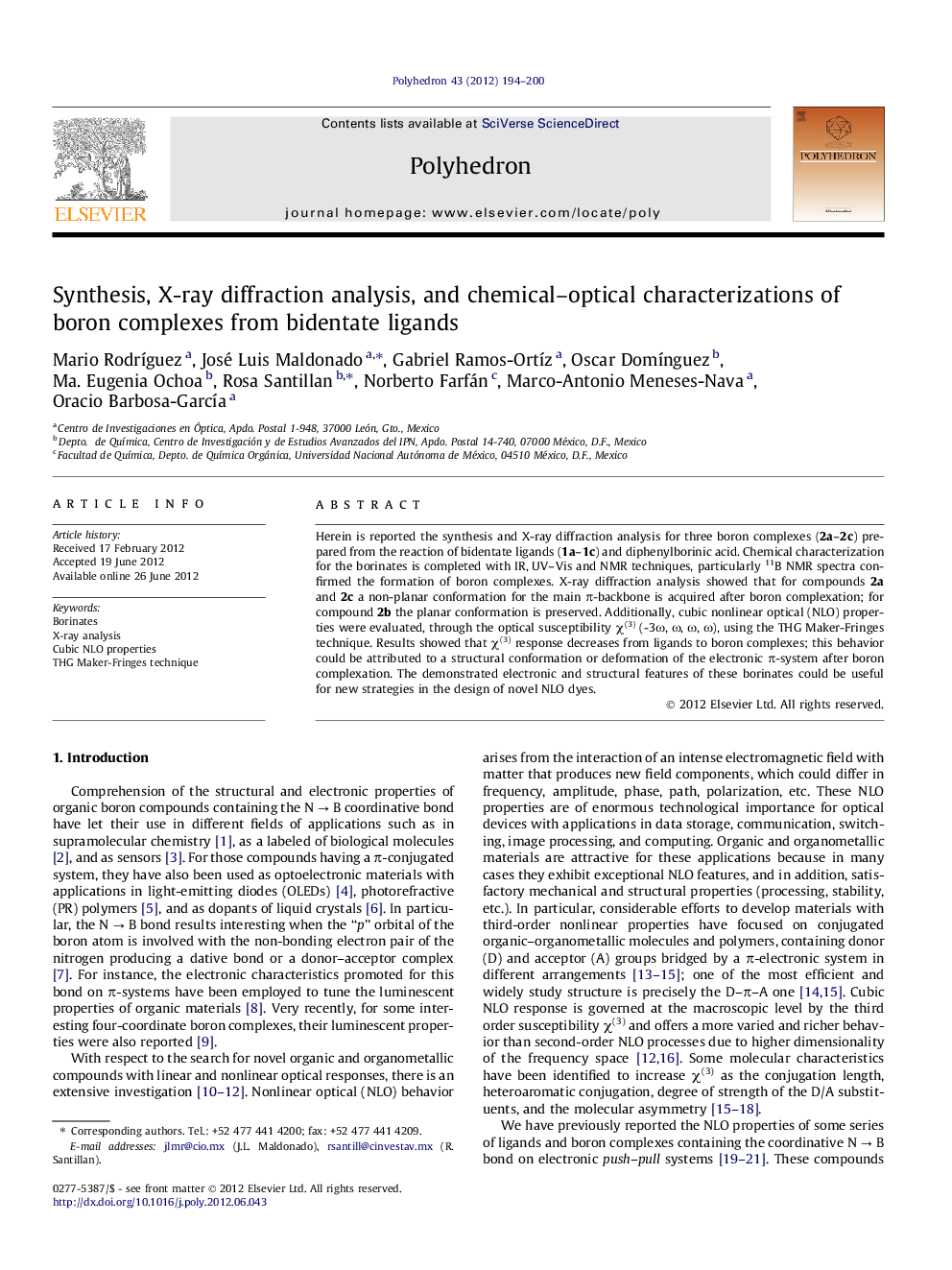| Article ID | Journal | Published Year | Pages | File Type |
|---|---|---|---|---|
| 1334775 | Polyhedron | 2012 | 7 Pages |
Herein is reported the synthesis and X-ray diffraction analysis for three boron complexes (2a–2c) prepared from the reaction of bidentate ligands (1a–1c) and diphenylborinic acid. Chemical characterization for the borinates is completed with IR, UV–Vis and NMR techniques, particularly 11B NMR spectra confirmed the formation of boron complexes. X-ray diffraction analysis showed that for compounds 2a and 2c a non-planar conformation for the main π-backbone is acquired after boron complexation; for compound 2b the planar conformation is preserved. Additionally, cubic nonlinear optical (NLO) properties were evaluated, through the optical susceptibility χ(3) (-3ω, ω, ω, ω), using the THG Maker-Fringes technique. Results showed that χ(3) response decreases from ligands to boron complexes; this behavior could be attributed to a structural conformation or deformation of the electronic π-system after boron complexation. The demonstrated electronic and structural features of these borinates could be useful for new strategies in the design of novel NLO dyes.
Graphical abstractFor three new borinates, their electronic and experimental structural parameters obtained from X-ray diffraction are related with their non linear optical behavior, specifically the optical susceptibility χ(3) measured through THG Maker-fringe technique.Figure optionsDownload full-size imageDownload as PowerPoint slideHighlights► Three boron complexes from bidentate ligands and diphenylborinic acid; X-ray diffraction. ► Optical susceptibility χ(3) (-3ω, ω, ω, ω) using the THG Maker-Fringes technique. ► Reduction on χ(3) from ligands to borinates was related to structural features. ► These results could be useful for new strategies in the design of novel NLO dyes.
